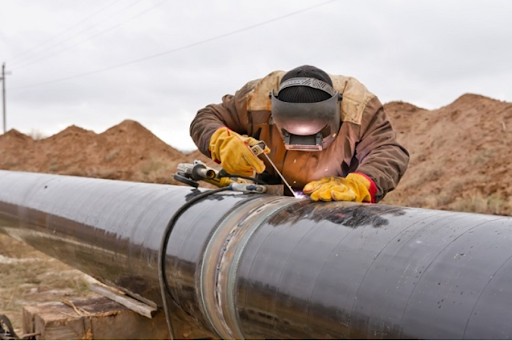How to Stay Safe When Sharing the Road with 18-Wheelers
Sharing the road with 18-wheelers is a common experience, especially in bustling cities like Omaha. These formidable giants of the highway are vital for carrying goods across state lines and supporting economic infrastructure. Their size and presence, however, mean that other drivers must exercise caution and awareness to ensure mutual safety.
By comprehending the dynamics of 18-wheelers, drivers can mitigate risks and navigate the roads more confidently. Effective road-sharing practices are integral to maintaining order and preventing accidents, ensuring that the various users of our streets coexist harmoniously.
Key Takeaways
- Understanding the dynamics of 18-wheelers can significantly enhance road safety.
- Implementing practical safety strategies ensures a smoother driving experience near large trucks.
- Staying informed about road rules and best practices can help prevent accidents.
Adapting Driving Habits
Driving amidst the hustle and bustle of Omaha requires an attentive and adaptable mindset, especially when navigating around 18-wheelers. These colossal vehicles demand more space for manoeuvring and stopping, obliging other drivers to tweak their everyday driving habits.
Maintaining a proactive approach is essential, constantly gauging the speed and trajectory of nearby trucks. If you are in an accident or require specialized guidance, consulting with a truck accident lawyer in Omaha is beneficial. These professionals can offer insights into managing legal concerns and ensuring your rights are protected following a road incident.
Understanding Blind Spots
One of the most critical aspects of driving around 18-wheelers is an acute awareness of their blind spots, or “no-zones.” These areas are significantly larger than a typical car, including the immediate front, back, and large portions of either side.
Staying in these blind spots increases the risk of accidents due to diminished visibility from the truck driver’s perspective. Always be visible to the truck driver by positioning yourself to see the driver’s mirrors. This practice not only aids in your safety but also supports a smoother traffic flow and reduces the likelihood of misunderstandings on the road.
Weather Impacts on Truck Driving
Omaha’s diverse and sometimes unpredictable weather can profoundly affect driving conditions, especially for 18-wheelers. Weather conditions such as snow, rain, and ice dramatically impact road safety by altering driving surfaces and reducing visibility. For trucks, these conditions mean longer stopping distances and increased difficulty maintaining traction.
It is paramount for all road users to adapt their driving in adverse weather by reducing speed and increasing following distances. Such preventive measures can substantially diminish the chances of slipping or skidding, thus improving overall road safety. Awareness and preparedness in dealing with weather impacts reflect a commitment not just to individual safety but to the collective well-being of all road users.
Maintaining Safe Distances
Maintaining appropriate distances is a cornerstone of road safety when sharing highways with 18-wheelers. Unlike smaller vehicles, trucks require longer stopping distances and more space for routine manoeuvres. Tailgating—or following a car too closely—can result in devastating rear-end collisions, an incredibly prevalent safety concern.
Guidelines suggest leaving a considerable buffer zone based on speed—ideally, one car length for every 10 mph. This space not only gives you enough time to react to sudden changes but provides the truck ample room for emergencies. Keeping such distances is not just beneficial for the truck driver; it ensures resilience and adaptability in ever-changing traffic conditions.
Highway Driving Tips
Highways present unique challenges and opportunities for interacting with 18-wheelers. On these faster-moving roads, vigilance and anticipation become even more critical. Proactively signalling intentions, maintaining consistent speeds, and avoiding abrupt lane changes can significantly contribute to safer highway environments.
Positioning yourself in areas where truck drivers can easily spot you—as in avoiding blind spots—is vital. Consistently practising these well-established protocols fosters a safer driving experience, reducing the chances of accident-related delays and ensuring everyone reaches their destination safely.
Traffic Regulations for Trucks
Traffic regulations play a pivotal role in maintaining order on the roads, especially concerning the unique dynamics of 18-wheelers. These regulations often include specific restrictions on lanes, speed limits, and truck parking areas. Understanding these rules is not just the responsibility of truck drivers; it’s crucial for all road users.
By aligning with these guidelines, drivers can minimize violations, maintain steady traffic flow, and promote safety. Following established road regulations fosters a respectful and efficient driving environment where all users understand their roles and responsibilities.
Modern Safety Features
Over the years, technological advancements in vehicle safety features have transformed the trucking industry. Modern 18-wheelers now have sophisticated technology to secure both driver and cargo. Features such as anti-lock brakes, stability control, and lane departure warnings prevent accidents and enhance control.
Acknowledging the capabilities of these technology-driven features can bolster confidence and ensure safer interactions with these massive vehicles. Adopting these modern features enhances safety standards and represents the trucking industry’s commitment to road safety.
Conclusion
Shared responsibility is at the heart of road safety when driving alongside 18-wheelers. By aligning with safety practices and remaining attentive to truck-specific challenges and road regulations, drivers contribute to a safer roadway environment. Recognizing the nuances of driving around these large vehicles helps prevent accidents and fosters mutual respect among all road users. Efforts to accommodate these dimensions, facilitated by awareness and deliberate action, can transform our highways into safer, more harmonious systems for everyone.






